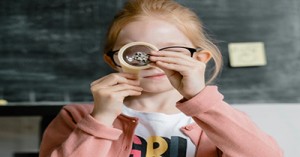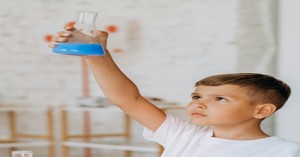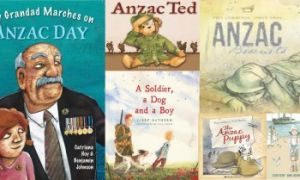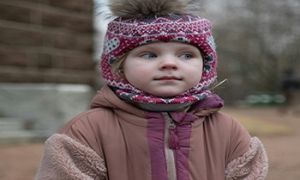Exploring science in early childhood is a fantastic way to nurture curiosity and a love for learning in young children. The following article provides information on Benefits Of Exploring Science In Early Childhood, How To Get Started, How To Create A Science Rich Environment, Incorporating Science into Daily Activities, How To Integrate Science With Other Subjects, Examples Of Themes To Explore Science, Linking To The EYLF and more.
Benefits Of Exploring Science In Early Childhood
Science activities can be integrated into everyday play and exploration, making learning both fun and meaningful. Here are some key points to consider:
-
Natural Curiosity: Children are naturally curious about the world around them. Encouraging this curiosity through hands-on activities and experiments can help them develop critical thinking and problem-solving skills.
-
Integration with Other Subjects: Science can be integrated with other areas of learning, such as music, movement, language arts, social studies, and art. This holistic approach helps children make connections between different concepts and enhances their overall understanding.
-
Inquiry-Based Learning: Using a problem-solving approach, children can explore scientific concepts through naturalistic, informal, and structured activities. This method encourages them to ask questions, make observations, and draw conclusions.
-
Role of Teachers: Teachers play a crucial role in facilitating science learning. They can provide guidance, resources, and support to help children explore and understand scientific concepts. Critical reflection on teaching practices is essential to create effective learning environments.
-
Use of Materials: Providing a variety of materials and resources, such as loose parts, natural elements, and simple tools, can enhance children's exploration and experimentation. These materials should be accessible and open-ended to encourage creativity and discovery.
How To Get Started
Getting started with exploring science in early childhood can be both exciting and rewarding. Here are some steps to help you begin:
-
Create a Science-Rich Environment: Set up a space with various materials and resources that encourage exploration and experimentation. Include items like magnifying glasses, measuring tools, natural objects (rocks, leaves, shells), and simple science kits.
-
Incorporate Science into Daily Activities: Look for opportunities to integrate science into everyday routines. For example, cooking can teach children about measurements and chemical reactions, while gardening can introduce them to plant biology and ecosystems.
-
Encourage Curiosity and Questions: Foster a culture of curiosity by encouraging children to ask questions and explore their interests. Use open-ended questions to stimulate thinking and discussion.
-
Plan Hands-On Activities: Design activities that allow children to engage in hands-on exploration. Simple experiments, nature walks, and sensory play are great ways to introduce scientific concepts.
-
Use Inquiry-Based Learning: Encourage children to investigate and find answers through observation, experimentation, and problem-solving. Provide guidance and support as they explore and discover.
-
Document and Reflect: Keep a record of children's observations, questions, and discoveries. Reflect on their learning experiences and use this information to plan future activities.
-
Collaborate with Families: Involve families in the learning process by sharing ideas for science activities that can be done at home. Encourage parents to support their children's curiosity and exploration.
-
Professional Development: Continuously seek opportunities for professional development to enhance your understanding of science education and stay updated on best practices.
How To Create A Science Rich Environment
Creating a science-rich environment for young children involves providing a variety of materials and opportunities that encourage exploration, curiosity, and hands-on learning. Here are some steps to help you get started:
-
Diverse Materials: Include a range of materials that children can explore, such as magnifying glasses, measuring tools, natural objects (rocks, leaves, shells), and simple science kits. These materials should be accessible and open-ended to encourage creativity and discovery.
-
Nature Integration: Incorporate natural elements into the environment, such as plants, water features, and natural loose parts like sticks, stones, and leaves. These elements can stimulate children's curiosity about the natural world and provide opportunities for observation and experimentation.
-
Science Centers: Set up dedicated science centers or areas where children can engage in scientific activities. These centers can include items like microscopes, scales, magnets, and other tools that support scientific inquiry.
-
Outdoor Exploration: Utilize outdoor spaces for science exploration. Gardens, nature trails, and outdoor classrooms can provide rich opportunities for children to observe and interact with the natural environment.
-
Hands-On Activities: Plan and facilitate hands-on science activities that encourage children to explore and experiment. Simple experiments, nature walks, and sensory play are great ways to introduce scientific concepts.
-
Inquiry-Based Learning: Encourage children to ask questions and explore their interests through inquiry-based learning. Provide guidance and support as they investigate and discover answers to their questions.
-
Documentation and Reflection: Keep a record of children's observations, questions, and discoveries. Reflect on their learning experiences and use this information to plan future activities.
-
Professional Development: Continuously seek opportunities for professional development to enhance your understanding of science education and stay updated on best practices.
Incorporating Science into Daily Activities
Incorporating science into daily activities is a wonderful way to nurture children's curiosity and love for learning. Here are some practical ideas to get you started:
-
Cooking and Baking: Use cooking and baking activities to teach children about measurements, chemical reactions, and the properties of different ingredients. For example, you can explore how yeast makes dough rise or how different ingredients mix to form a batter.
-
Gardening: Involve children in gardening activities to teach them about plant biology, ecosystems, and the life cycle of plants. They can observe how seeds germinate, how plants grow, and the importance of sunlight and water.
-
Nature Walks: Take children on nature walks to explore the local environment. Encourage them to observe and collect natural objects like leaves, rocks, and flowers. Discuss the different types of plants and animals they encounter.
-
Water Play: Use water play to explore concepts like buoyancy, density, and the water cycle. Children can experiment with floating and sinking objects, observe how water changes state, and learn about evaporation and condensation.
-
Building and Construction: Provide materials for building and construction activities, such as blocks, cardboard, and recycled materials. Children can learn about engineering principles, balance, and stability as they create structures.
-
Sensory Play: Incorporate sensory play activities that involve different textures, smells, and sounds. For example, you can create sensory bins with sand, water, or rice, and encourage children to explore and describe their experiences.
-
Observation and Recording: Encourage children to observe and record their findings. They can keep a science journal, draw pictures, or take photos of their observations. This helps them develop their observation and documentation skills.
-
Experiments and Investigations: Plan simple experiments and investigations that allow children to explore scientific concepts. For example, you can explore how different materials react to heat, how plants absorb water, or how shadows change throughout the day.
How To Integrate Science With Other Subjects
Integrating science with other subjects can create a holistic and engaging learning experience for young children. Here are some ideas on how to do this:
-
Music and Movement: Use songs and dances to teach scientific concepts. For example, you can sing songs about the water cycle, seasons, or animals. Movement activities like acting out the life cycle of a butterfly can also help children understand scientific processes.
-
Language Arts: Incorporate science-themed books, stories, and writing activities. Reading books about nature, animals, and scientific discoveries can spark children's interest in science. Encourage them to write or draw their observations and experiments in a science journal.
-
Social Studies: Connect science with social studies by exploring how different cultures interact with the natural world. Discuss topics like traditional farming practices, environmental conservation, and the impact of human activities on ecosystems.
-
Art: Use art projects to explore scientific concepts. Children can create drawings, paintings, or sculptures of plants, animals, and natural phenomena. Art can also be used to illustrate scientific experiments and observations.
-
Math: Integrate math skills into science activities. Measuring ingredients for a science experiment, counting the number of seeds in a fruit, or graphing the growth of a plant are all ways to combine math and science.
-
Dramatic Play: Set up a science-themed dramatic play area where children can role-play as scientists, explorers, or environmentalists. This can help them understand scientific concepts and processes in a fun and imaginative way.
-
Thematic Projects: Plan thematic projects that incorporate multiple subjects. For example, a project on "The Ocean" can include reading books about marine life, creating ocean-themed art, learning about ocean currents and tides, and discussing the importance of ocean conservation.
By integrating science with other subjects, you create a rich and interconnected learning experience that helps children see the relevance of science in their everyday lives.
Examples Of Themes To Explore Science
Here are some engaging themes that can help integrate science with other subjects in early childhood education:
-
Seasons: Explore the changes in weather, plant life, and animal behavior throughout the year. Activities can include observing seasonal changes, creating art projects with natural materials, and reading books about different seasons.
-
Space and Astronomy: Introduce children to the wonders of the universe. Activities can include stargazing, creating models of the solar system, and reading stories about space exploration.
-
Plants and Gardening: Teach children about plant biology and ecosystems. Activities can include planting seeds, observing plant growth, and creating art projects with leaves and flowers.
-
Animals and Habitats: Explore different animals and their habitats. Activities can include animal-themed dramatic play, creating habitat dioramas, and reading books about various animals.
-
Water and Oceans: Investigate the properties of water and marine life. Activities can include water play, creating ocean-themed art projects, and reading stories about sea creatures.
-
Weather and Climate: Learn about different weather patterns and climate zones. Activities can include weather observations, creating weather charts, and conducting simple experiments related to weather phenomena.
-
Insects and Bugs: Discover the world of insects and their roles in the ecosystem. Activities can include bug hunts, creating insect-themed art projects, and reading books about different types of insects.
-
Recycling and Sustainability: Teach children about the importance of recycling and taking care of the environment. Activities can include sorting recyclable materials, creating art projects with recycled items, and discussing ways to reduce waste.
-
Human Body and Health: Explore the human body and healthy habits. Activities can include learning about different body parts, discussing healthy foods, and engaging in physical activities that promote fitness.
-
Simple Machines: Introduce children to basic engineering concepts. Activities can include building simple machines with everyday materials, exploring how different machines work, and reading books about inventors and engineers.
By exploring sceince in early childhood, you create a rich and interconnected learning experiences that helps children see the relevance of science in their everyday lives.
Linking To The EYLF
Linking science activities to the Early Years Learning Framework (EYLF) can enhance children's learning experiences by aligning them with key learning outcomes. Here are some ways to integrate science activities with the EYLF:
-
Learning Outcome 1: Children have a strong sense of identity
-
Activity: Exploring the natural environment through nature walks and observations.
-
Link: Encourages children to develop a sense of belonging and connection to their environment.
-
-
Learning Outcome 2: Children are connected with and contribute to their world
-
Activity: Participating in recycling projects and learning about sustainability.
-
Link: Helps children understand their role in caring for the environment and promotes social responsibility.
-
-
Learning Outcome 3: Children have a strong sense of wellbeing
-
Activity: Engaging in physical activities like gardening and outdoor play.
-
Link: Supports physical health and wellbeing, and fosters a connection with nature.
-
-
Learning Outcome 4: Children are confident and involved learners
-
Activity: Conducting simple experiments and investigations.
-
Link: Encourages curiosity, problem-solving, and critical thinking skills.
-
-
Learning Outcome 5: Children are effective communicators
-
Activity: Documenting observations and sharing findings with peers.
-
Link: Enhances communication skills and the ability to express ideas and information.
-
Further Reading
International Day of Women and Girls in Science Activities
Science Resources For The Early Years
STEM: Teaching Guide For Educators
Easy Science Experiments For Toddlers and Preschoolers
Examples of STEM Experiences
STEM Education
Reference:
Exploring Science In Early Childhood : A Developmental Approach - Lind, Karen







 As an Educator in Australia, your pay rate falls under the Children’s Services Award 2010. This award states the minimum amount that an employer can
As an Educator in Australia, your pay rate falls under the Children’s Services Award 2010. This award states the minimum amount that an employer can When working as a qualified Early Childhood Teacher (with a university degree) within a service, your rate of pay will come from the Educational Services
When working as a qualified Early Childhood Teacher (with a university degree) within a service, your rate of pay will come from the Educational Services When working as a Diploma Qualified Educator your pay rate is from the Children's Services Award 2010. This Award states your minimum rate of pay
When working as a Diploma Qualified Educator your pay rate is from the Children's Services Award 2010. This Award states your minimum rate of pay When working as a Cert 3 Qualified Educator, your pay rate is from the Children's Services Award 2010. This Award states your minimum rate of
When working as a Cert 3 Qualified Educator, your pay rate is from the Children's Services Award 2010. This Award states your minimum rate of Educational Leaders play a crucial role in their early childhood service by ensuring that the educational program aligns with best practices and supports the holistic
Educational Leaders play a crucial role in their early childhood service by ensuring that the educational program aligns with best practices and supports the holistic In early childhood education and care, ratios are more than a technicality—they are a frontline safeguard. Every child deserves responsive supervision, emotional connection, and developmental
In early childhood education and care, ratios are more than a technicality—they are a frontline safeguard. Every child deserves responsive supervision, emotional connection, and developmental Here’s a comprehensive Mobile Phone and Smart Watch Policy tailored for early childhood education and care (ECEC) services in Australia, aligned with the latest 2025
Here’s a comprehensive Mobile Phone and Smart Watch Policy tailored for early childhood education and care (ECEC) services in Australia, aligned with the latest 2025 With the new national child safety reforms kicking in on 1 September 2025, early childhood services like yours have a real opportunity to lead the
With the new national child safety reforms kicking in on 1 September 2025, early childhood services like yours have a real opportunity to lead the The Sea of Fish Challenge is a national initiative that invites children, educators, families, and communities to create and display fish artworks as a symbol
The Sea of Fish Challenge is a national initiative that invites children, educators, families, and communities to create and display fish artworks as a symbol Across the early childhood education and care sector, educators are sounding the alarm: current staffing ratios are insufficient to deliver safe, meaningful, and developmentally appropriate
Across the early childhood education and care sector, educators are sounding the alarm: current staffing ratios are insufficient to deliver safe, meaningful, and developmentally appropriate


